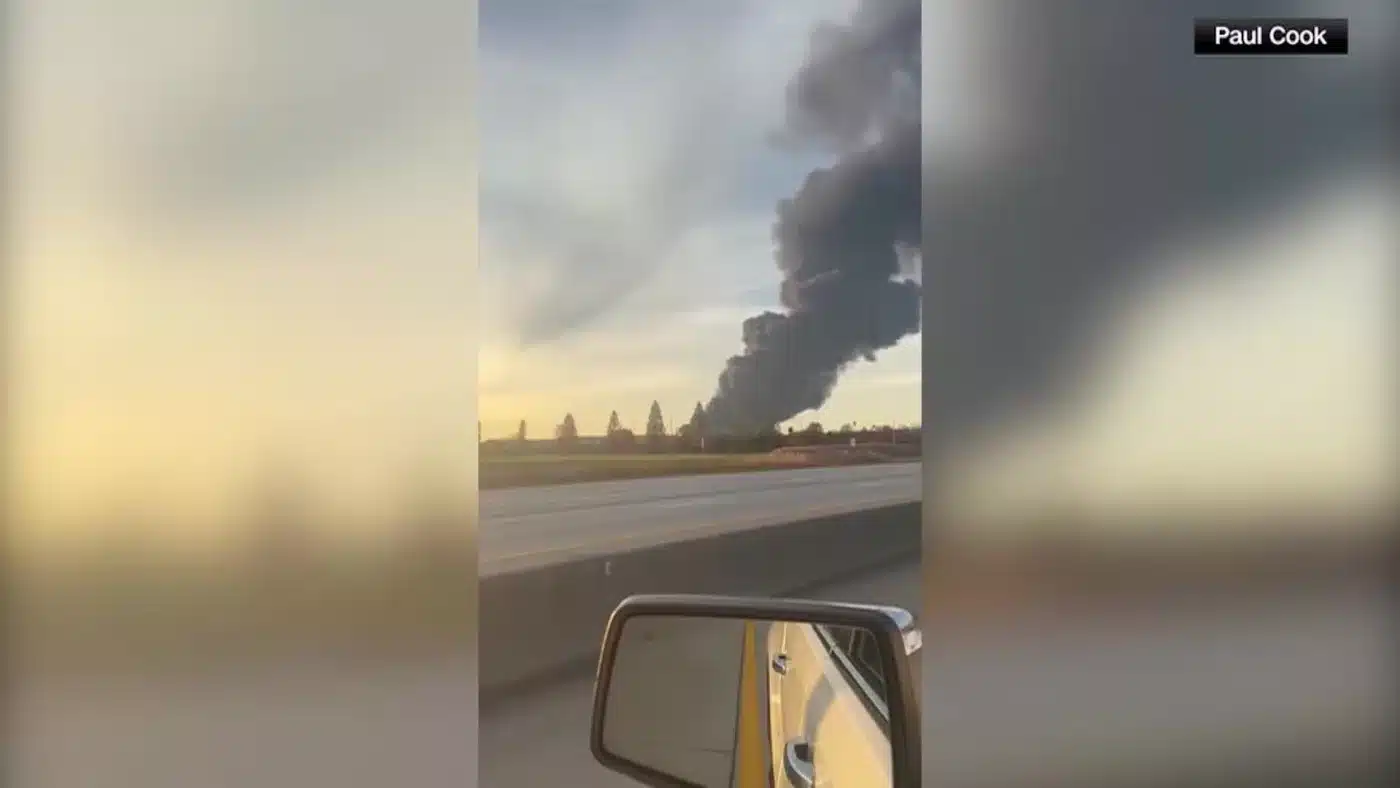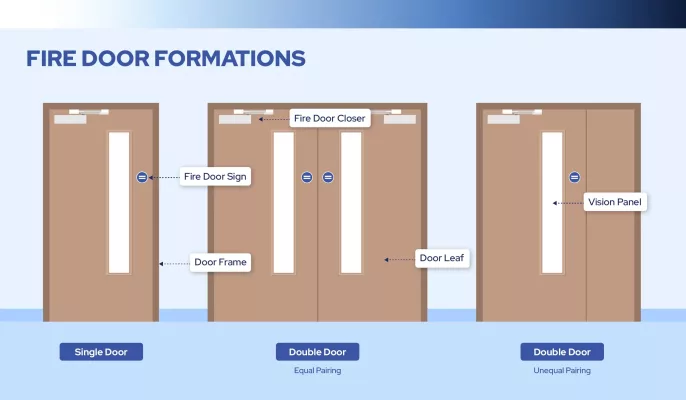When a UPS MD-11 cargo aircraft crashed shortly after takeoff in Louisville, Kentucky, the resulting explosion and fuel-fed fire rapidly engulfed the surrounding area. According to initial reports, the aircraft struck structures near the airport perimeter, causing an intense blaze that spread over a wide radius. Thick, fast-moving smoke forced emergency services to initiate large-scale evacuation procedures, while firefighters worked through extreme heat and aviation-fuel combustion hazards to contain the flames. The incident led to tragic loss of life and injuries, and countless packages and commercial goods were destroyed in minutes — a sobering reminder of how vulnerable supply chains and communities can be when fire breaks containment.

As a company involved in global fire protection research and engineering, we extend our sincere condolences to the families and communities impacted. Beyond the emotional and economic toll, this tragedy highlights a deeper question: how quickly can fire and smoke surpass the systems designed to control them — whether in an aircraft cargo hold or inside a commercial building on the ground? Aircraft rely on compartmentalization, heat-resistant materials, and sealed sections to prevent fire from spreading between cargo zones. Buildings use a similar principle, though implemented differently — through fire-rated doors, smoke seals, automatic closers, and tested framing systems designed to hold back heat and smoke for defined periods of time.
Yet, as this incident makes clear, when impact forces, fuel energy, or structural breach overwhelm those barriers, the progression of fire can shift from controlled to catastrophic within seconds. The lesson applies universally: fire safety is not only about extinguishing flames, but about creating time — time for evacuation, time for response, and time to prevent escalation. And whether in aviation engineering or architectural fire protection, that “time” is won through design, material science, and reliable compartment protection systems.
What Happened — A Brief Look at the Incident Timeline

In the early moments after takeoff, witnesses reported that the MD-11 cargo aircraft appeared to lose stability before descending rapidly and impacting structures near the airport’s logistics perimeter. The collision ruptured fuel tanks almost instantly, releasing large volumes of aviation fuel. Once ignited, Jet A fuel burns at extremely high temperatures, producing dense smoke and accelerated heat buildup — conditions that significantly reduce survivable time for anyone near the impact zone.
Emergency crews arrived within minutes, but aircraft fire differs from typical structural fire behavior. Aviation fuel burns with a higher heat release rate, and in open-air crash conditions, the fire can fan outward rather than upward, creating a horizontal fire spread path. This pattern aligns with known aircraft crash fire dynamics documented in FAA and NTSB case studies, where the critical window for containment is often less than 180 seconds before temperatures and smoke become uncontrollable.
As investigators from the NTSB continue to examine flight data recorders, structural debris, and cargo composition, no definitive cause has yet been released — and determining the initiating failure may take months. However, what is already evident is that the fire spread faster than human response systems could adjust, reflecting a central truth in aircraft fire safety:
When fuel, oxygen, and structural breach converge, the primary challenge is not only controlling flames — but controlling time.
H2: Why Aircraft Fires Escalate So Quickly — The Science Behind the Risk

Keyword Focus: Aircraft Fire Safety / Aviation Fire Protection
Aircraft are engineered with strict fire protection measures, particularly in cargo and cabin zones. Regulations such as FAA 14 CFR 25.853, 25.855, and 25.857 define how materials must resist ignition, limit flame spread, and reduce smoke toxicity. Cargo compartments must include:
- Fire-resistant linings to delay heat penetration
- Smoke and heat detectors capable of early-stage detection
- Halon or clean-agent suppression systems designed to fill the compartment and starve the fire of oxygen
- Compartmentalization, preventing fire from spreading between cargo zones
However, these fire safety systems are designed for internal fire events, not high-impact structural failure. When fuselage integrity breaks, the controlled fire compartment becomes an open fuel field, and the aviation fire safety system’s effectiveness is fundamentally compromised.
This is where aviation and building fire protection share the same principle:
If the compartment barrier is breached, fire moves freely — and control shifts from prevention to survival.
In the aftermath of the crash, firefighters described a sight that is tragically familiar in aviation incidents: flames advancing not upward like a typical building fire, but outward — fast, flat, and unstoppable. The reason is simple, though often overlooked. Aircraft are designed like a series of sealed chambers, each meant to slow fire long enough for a chance of survival. When one chamber breaches, the protection behind it is lost all at once.
Inside an aircraft’s cargo hold, the walls are lined with fire-resistant panels. The doors are pressure-tight, sealed so smoke cannot pass through. The suppression systems are designed to hold the fire inside its compartment — to buy pilots and crews the few crucial minutes needed to land or respond.
But the moment the fuselage breaks, the world becomes the compartment — and there is no longer a barrier to hold the fire where it started.
This is the same lesson that architects and safety engineers learned decades ago on the ground. Before modern building fire codes, fires in warehouses, hospitals, and apartment blocks would sweep through hallways and staircases like wind through a tunnel. People didn’t perish because the flames were unstoppable — but because the smoke outran them.
So the philosophy changed.
Buildings began to be designed not as single open spaces, but as connected rooms that could stand alone in an emergency. Walls became rated for heat resistance. Stairwells became sealed. And doors — once just a way to enter and exit — became life-saving boundaries.
A fire door, at its core, is not simply wood, steel, or a frame.
It is a time machine:
- A minute to breathe
- A minute to find the exit
- A minute for firefighters to arrive
- A minute for survival
Just like an aircraft relies on its compartments to protect life at 30,000 feet, a building relies on its fire doors to protect life on the ground.
And when those boundaries fail — whether through impact, poor maintenance, being left propped open, or simply never installed — the story ends the same way: the fire writes the ending faster than people can escape it.
Fire safety, in every environment, is a race against time. The barrier — whether an aircraft cargo liner or a fire-rated door — is the runner’s only head start.
How Fire Doors Create Survivable Time in Real Buildings
In a building fire, the first danger is almost never the flame itself.
It is the air.When material begins to burn, even slowly, the smoke that forms spreads faster than heat. It fills hallways. It crawls under door gaps. It rises up stairwells long before anyone sees the fire’s light. People often believe they would see fire before it reaches them — but in real emergencies, they feel it in their lungs first.
This is why modern fire safety is not built on the idea of “stopping fire completely.”
It is built on delaying it.A properly rated fire door does not promise to hold back flames forever.
What it promises is minutes.
Minutes that decide whether a building is evacuated safely — or becomes a tragedy.Imagine a warehouse at night.
Only a few people inside — a guard, a maintenance worker.
A small electrical fault begins in a storage section.
If the building is open-plan, smoke will spread silently through the entire volume.
Breathing becomes difficult before alarms can even register.But if that same warehouse is divided into compartments, each protected by fire doors:
- The fire is contained in one zone
- The alarm triggers before the smoke reaches exits
- The workers can walk out, not run
- Fire crews arrive to fight a localized, understandable fire, not a structure fully engulfed
There is no drama in this version of the story.
And that is the point.
Safety is the art of preventing stories from becoming headlines.H2: The Research Focus — How Yuankai Approaches Fire Door Performance
At Yuankai Fire Door Manufacturing, our technical work is built on one belief:
A fire door is only as strong as the environment it must survive in.
So instead of designing doors only to pass certification tests, our research focuses on how doors behave under real-world stress, where:
- Pressure changes as smoke expands
- Heat conducts through frames and hinges
- Intumescent seals must activate at the right temperature
- Door closers must work even when people forget, panic, or prop doors open
We study not just fire resistance, but smoke movement — because smoke is what reaches people first.
Our engineering teams run simulations and physical burn tests on:
- Positive pressure fire scenarios (similar to UL 10C / NFPA 252 conditions)
- Compartment boundary performance in large industrial facilities
- Temperature-induced steel deformation in long-duration burns
- Aging of seals and hinges over years of real use, not just at installation
This aligns with the aviation lesson we began with:
In an aircraft, the compartment is designed not to be perfect —
but to hold the fire long enough to act.A fire door serves the same purpose on the ground.
It doesn’t need to be heroic.
It just needs to buy time — reliably, predictably, silently — on the worst day a building will ever face.
The UPS crash in Kentucky is now a matter of investigation, engineering analysis, and public memory. Its cause will be studied. Its data will be archived. Procedures may change. Manuals may be rewritten. But its most immediate lesson is something far simpler, and far older:
Fire does not need time to become dangerous.
People do.
In aviation, that time is created by compartments that hold heat and smoke inside controlled boundaries — just long enough for action to be taken. The system is designed to give pilots, crew, and passengers a fighting chance.
In buildings, that same chance comes from doors that close, seals that expand, hinges that do not deform, frames that do not warp, and corridors that remain breathable long enough for people to escape. These components do not draw attention to themselves in daily life. They are not seen as dramatic or heroic. They are simply there, waiting for a day everyone hopes will never come.
The tragedy in Kentucky reminds us that fire safety is not merely a regulatory requirement, or a box checked during construction or aircraft certification. It is a living responsibility — shared by designers, engineers, maintenance staff, building owners, pilots, firefighters, and every person who walks through a doorway.
And that responsibility begins long before any alarm sounds.
It begins in how we design compartments, how we respect boundaries, and how we acknowledge that time is the most fragile resource in an emergency.
Fire will always move faster than expected.
Smoke will always search for the smallest opening.
And the systems meant to protect life must be ready before anyone realizes they are needed.
Whether in the sky or on the ground, the principle is the same:
Contain the fire.
Delay its spread.
Protect the path to survival.
That is how lives are saved — not by chance, but by preparation.


